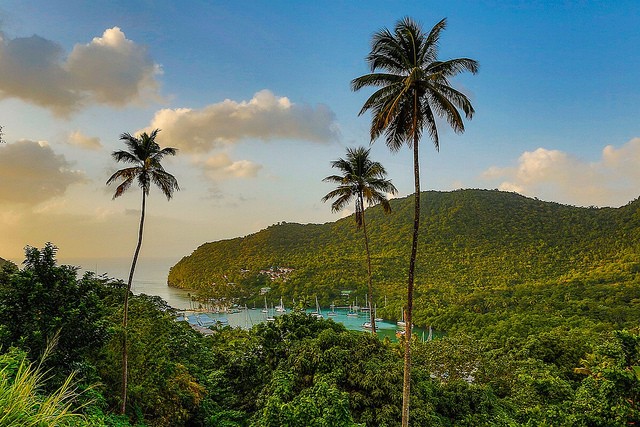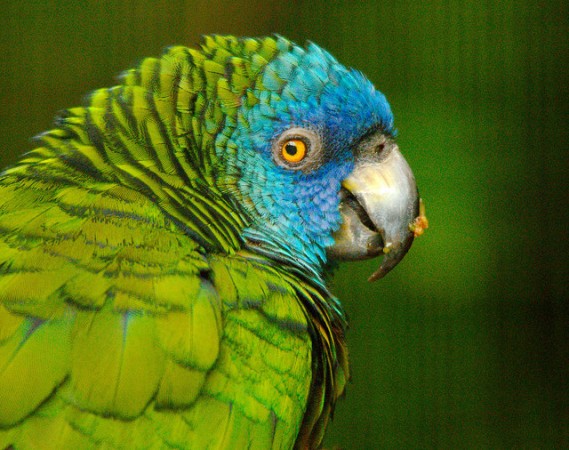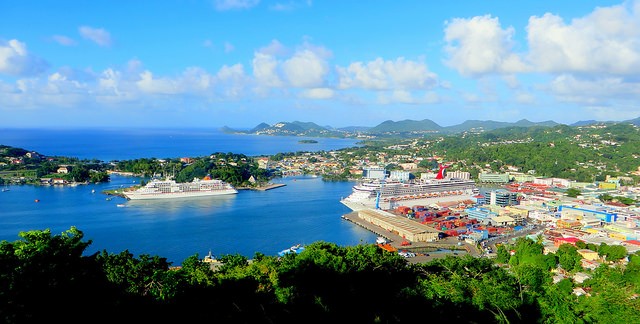 the Travel Enthusiast
the Travel Enthusiast
- 27 May
Adam in Amazing Places | NO COMMENTSSaint Lucia, Helen of The West
Saint Lucia is an island nations situated on the Caribbean. It is part of the Windward Islands group and lies between Barbados and Dominica.
Castries is both the capital and largest city of Saint Lucia. The total area of the country is 616 sq km while the coastline is 158 km.
The official and national language is English. French Creole is also widely spoken throughout the country.
East Caribbean dollar is the currency of Saint Lucia. The political status of the country is monarchy, the head of state being Queen Elizabeth II.
Saint Lucia is one of the most distinguished and diverse among the Caribbean islands. From sandy beaches to high mountains and large bays, the island offers you many. Some of the main attractions are:
- Piton’s Management area
- Marigot Bay Rodney Bay
- Pigeon Island
- Anse Chastanet
- Vigie Beach
The infrastructure and transportation is mixed, most roads being unpaved. There are 1,210 km of roads. A former British colony, the traffic is on the left. The two main ports of the country are in Castries and Vieux Fort. Cruises can be also taken from these ports to Dominica and Martinique.
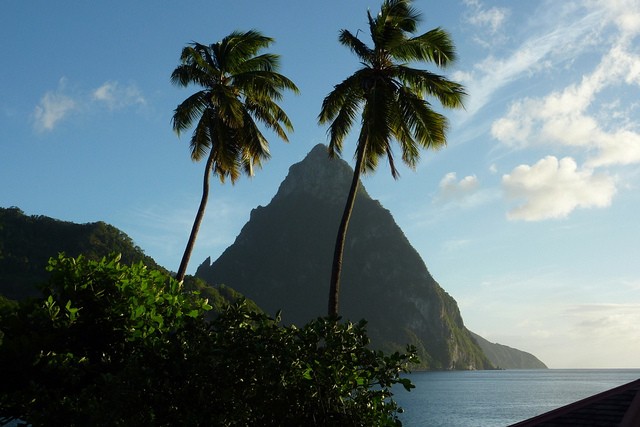
The Pitons, Saint Lucia’s best natural landscape that is recognized by UNESCO as a natural heritage site ©OasisMarigot/flickr
Hewanorra International is the international airport of the country and it lies about 67 km south of Castries. Cars can be hired from police stations and or hire firms. Some mountainous roads can be extremely steep. Taxis and minibuses are widespread.
Despite being relatively wealthy, Saint Lucia suffered issues such as dependence on bananas, small population, frequent natural disasters and limited human resources. In spite of these problems, it managed to increase greatly its economy, focusing on tourism, benefiting from its beautiful and panoramic landscapes.
- Flights
- Hotels
- Packages
- Cars
- Cruises
travel search by Travelgrove (get this widget)Saint Lucia is mostly a mountainous island known for having a volcanic origin. It has 3 important mountains on the center like Mt Gimie which rises to 950 km. The other mountains are Gros Piton(798 meter) and Petit Piton(750 meters). The mountains are intersected with short rivers. Sandy beaches are widespread on the coastline and renowned for having one of the best beaches.
The climate of the country is hot tropical. The temperature is moderate all year round. Trade winds are very common on the island. The rainy season is from May to November while the dry season is from January to April.
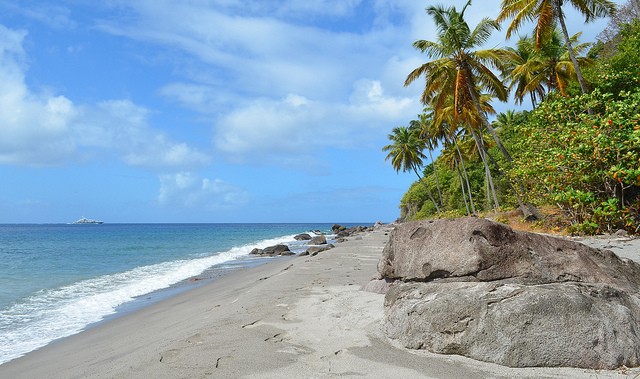
The beach of Anse l’Ivrogne, Saint-Lucia. It is one of the most popular beaches of the island ©Jimmy Riviere/flickr
Saint Lucia has the most rain forests out of all Caribbean islands, covering about 80% of the land area. Because the island is traditionally based on agriculture, about 30% of the land is under cultivation. many beautiful exotic plants and flowers can be found all around.
The wildlife consists of unique and rich species of birds. The most common example is the Saint Lucia parrot. Reptiles like the pygmy lizard and the Saint Lucia tree lizard can also be found here.
The total population is 181.000, 17% of them living in urban areas. Almost every Santa Lucia’s population is a mixed of European and African descent.
Freedom of religion is granted and well protected although the country is filled mostly by Christians.
The health care system has improved much during the last decade, many hospitals and clinics being opened all around the country. The infant mortality is 15 per 1.000 live births.
According to the “Immigration and Customs” of the country, VISAS are required by most foreign visitors.
The Brief history of Saint Lucia
Its nickname “The Helen of the West” comes from the constant fight over the island, especially between the French and English. Like most islands on the Caribbean, the Caribs drew out the Arawak settlers around 800 CE, the first Europeans arriving in the 16th century. It is by far unknown which explorer landed on the island. For the next centuries the Europeans struggled for control over the island against the Arawaks, particularly between the 17th and early 19th century.
The constant bloody fights of Spanish, French and British empires againts the Arawks left the island disputed among the powers. The British and French rivaled each other for the next era. The British failed to attempt the island in the 17th century, many Arawak’s killing them. The Arawaks also caused trouble for the French settlers, and while they’ve made peace with them and were even permitted to settle, It was short lived, as Britain finally gained the island from the french under the Treaty of Paris in 1814, Saint Lucia becoming a Crown Colony for the British empire.
During the period of British rule, slavery was abolished in 1834 and the plantation economy increased. The plantation of sugar was the most popular. From that moment on the island was part of the Windward Islands Federation until 1959. The same year, it joined the West Indies Federation. The West Indies Federation main purpose was independence of the British Caribbean islands from the UK rule.
Despite the purpose of the organisation, it was dissolved in 1962 because of disagreements and bickering among the leaders, the nations started aiming for independence alone. In 1967 it gained a full self internal self government as well as a new constitution.
It finally achieved total independence from the United Kingdom in 1979, also becoming a member of the Commonwealth of Nations and constitutional monarchy under Queen Elizabeth II.
John Compton of the United Workers Party became the first prime minister of the country.
Saint Lucia was shaped by the British over the course of centuries, becoming one of the most outstanding destinations in the world. Because of the natural landscapes that country offers, it is the best place especially for hikers and nature lovers. The beaches are also exceptionally beautiful filled with good quality resorts.
You might also like
